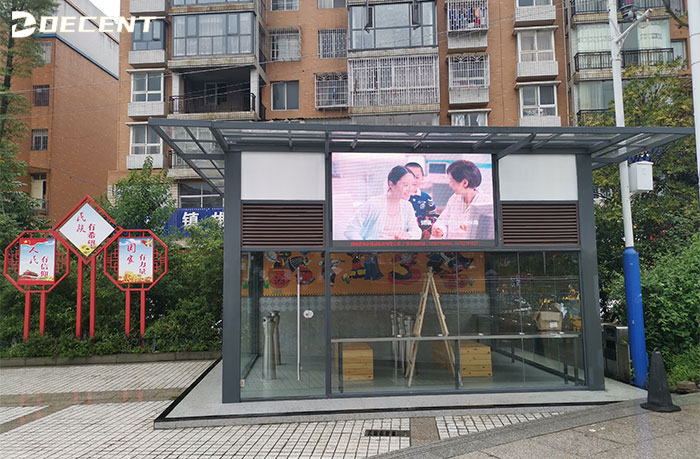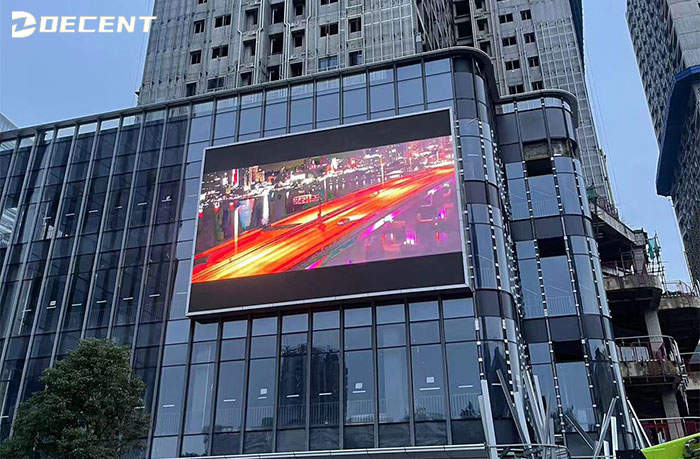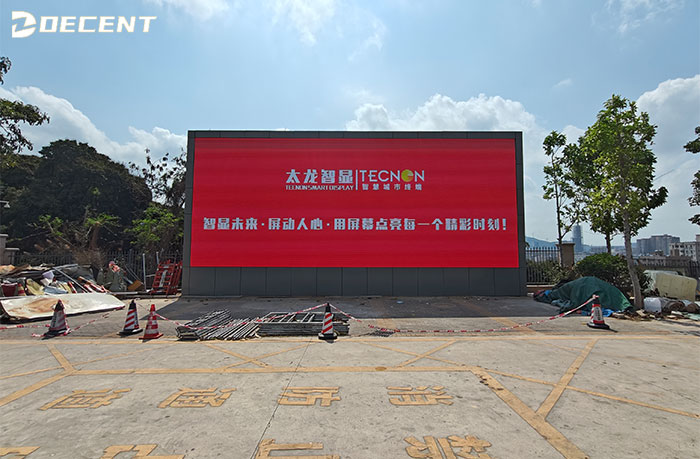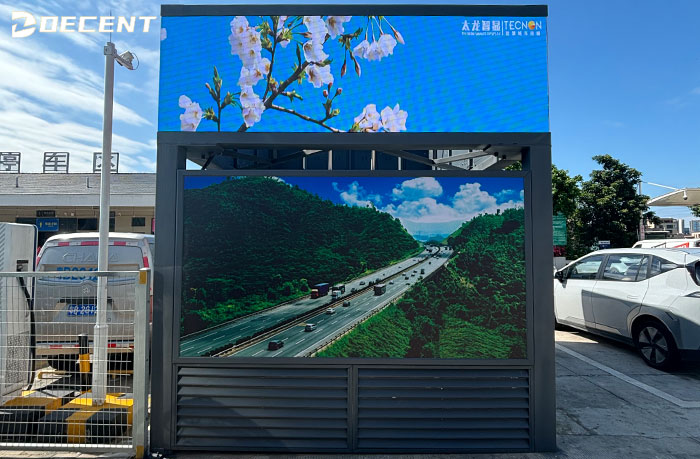



In today’s digital era, outdoor LED displays have become integral to advertising, public information, and entertainment. However, these screens are constantly exposed to harsh environmental elements like rain, humidity, dust, and extreme temperatures. For any outdoor application, ensuring that an Waterproof LED display screen is not just a feature—it’s a necessity for long-term reliability, safety, and performance.

LED displays are significant investments. Water damage is one of the most common causes of failure in outdoor units, leading to short circuits, dead pixels, complete blackouts, and even potential fire hazards or electrical risks.
The internal components of an LED screen, particularly the sensitive SMD (Surface Mount Device) lamps, are highly vulnerable to moisture. These lamps consist of (precision components) like metal brackets, chips, and wires. When water vapor seeps into the tiny gaps between the pins and the circuit board, it can cause oxidation and corrosion at the solder joints, eventually resulting in lamp failure and degraded performance1. Furthermore, in coastal areas, the presence of salt spray can accelerate corrosion, while temperature fluctuations between day and night lead to condensation, which is equally damaging.

The Ingress Protection (IP) rating is an international standard that defines the level of protection a device has against solids and liquids. For an outdoor LED display, a high IP rating is the most fundamental condition for being considered waterproof.
IP65 and Above is Standard: Most quality outdoor LED displays should have a rating of IP65 or higher.
IP65: Means the screen is “dust-tight” and protected against water jets from any angle. It can handle heavy rain and cleaning with high-pressure water jets.
IP67/IP68: Offers even greater protection. An IP68 rating, for example, means the screen can be immersed in water (typically beyond 1 meter deep for a specified time) and still function perfectly. This is crucial for applications near water bodies or in areas prone to flooding.
Beyond the IP rating, the physical build quality is paramount. This involves:
Full Sealing Design: The cabinet housing the display modules must be fully sealed with high-quality gaskets and seals to prevent water from entering the interior. This is often described as a “full-sealed design” that effectively blocks wind, rain, dust, and moisture from reaching the internal circuitry.
Material Quality: The materials used for the cabinet (often die-cast aluminum) must be corrosion-resistant and durable enough to maintain their seal under various weather conditions and over time.
Traditional sealing methods like potting can be effective but often trap heat, leading to overheating and reduced LED lifespan1. Modern solutions offer better protection without sacrificing (heat dissipation).
GOB (Glue on Board) Technology: This involves applying a special transparent glue layer over the surface of the LED module. This layer protects the LEDs from water, dust, and physical impact (like kicks or accidental hits). GOB screens typically achieve high IP ratings (like IP68) and are known for being anti-crash and anti-collision.
Nano Coating Technology (@IPXXPT®): This is an emerging and innovative solution. A nano-scale waterproof coating is applied to the LED display surface using chemical vapor deposition.
It is ultra-thin and transparent, not affecting light transmission or the screen’s visual quality.
It offers superior penetration, seeping into microscopic gaps like those around lamp solder points to form a continuous protective barrier.
It is multifunctional, providing protection against water, moisture, sulfurization, salt spray, corrosion, and UV rays.
Crucially, it is thermally efficient, unlike potting, as it doesn’t impede heat dissipation.
LEDs generate significant heat. If trapped inside a sealed cabinet, this heat can drastically reduce the lifespan of the LEDs and other electronic components. A waterproof design must also manage heat effectively.
Passive Ventilation Designs: Some innovative designs, like hollow screens, allow air to flow through the structure (“wind-piercing but not light-piercing“). This natural airflow dissipates heat without letting light through, maintaining contrast. This eliminates the need for internal fans or air conditioners, reducing energy consumption by up to 50%.
Thermally Efficient Materials: Using materials that aid heat transfer, like the transparent glue in GOB or the thin layer in nano coatings, helps move heat away from the LEDs without compromising the waterproof seal.
A screen must perform consistently in its specific operating environment.
Operating Temperature/Humidity Range: It should have a wide operating range (e.g., -20°C to 40°C) and handle high humidity levels (e.g., 10% – 90% non-condensing).
Resistance to Corrosion and UV: Components should be treated to resist corrosion, especially in coastal (salt spray) or industrial areas. UV resistance prevents the yellowing or degradation of materials over time.
Even the most robust screens may require maintenance. A good design considers this.
Front-Serviceable Designs: Some waterproof displays, like the EA45F model, allow for front-serviceable maintenance. This means technicians can access and replace parts from the front without needing to remove the entire display from its installation, simplifying the process.
Modular Design: A modular design, often with plug-and-play LED bars, allows for quick and easy replacement of individual components, minimizing downtime and maintenance costs.

Despite precautions, accidents happen. If a screen is exposed to water, immediate action can save it.
Power Off Immediately: Disconnect all power to prevent short circuits.
Dry Thoroughly: Use fans, blowers, or other tools to completely dry the screen—both exterior and interior—before even considering reapplying power.
Gradual Power-On (Aging): Once fully dry, power on the screen gradually:
Start at a low brightness (10% white) for 8-12 hours.
Gradually increase the brightness (30%, 60%, 80%) over subsequent 12-hour periods.
Finish at 100% brightness for another 8-12 hours.
Professional Inspection: Have a qualified technician inspect the internal components for any signs of corrosion or damage.

Selecting a waterproof LED screen requires careful consideration beyond just the price. Prioritize displays that meet these essential conditions: a high IP rating (IP65+), advanced protective technology (like GOB or nano coating), effective heat management, and proven durability in your specific climate.

Investing in a properly engineered waterproof LED display screen ensures not only stunning visual performance in all weather conditions but also long-term reliability, reduced maintenance costs, and a significantly higher return on investment. Look for certifications, patents, and case studies from manufacturers to validate their claims and ensure your display is built to last.
contact us
Stay up-to-date with our new product releases and latest news articles. DECENT Technology is a leading global supplier of LED display screens, providing customers worldwide with comprehensive solutions for the research and development, manufacturing, engineering installation, and after-sales service of high-end LED display equipment and display control systems. At present, it has developed into a national high-tech enterprise with over 1300 employees and more than 400 authorized national patents. The company has successively obtained safety production license, steel structure construction qualification, system integration qualification, third level professional contracting for building mechanical and electrical installation engineering, and second level professional contracting for electronic and intelligent engineering.
DECENT Technology is positioned as "core technology oriented" and has deeply cultivated and worked in the LED industry. It has established numerous marketing centers, offices, and after-sales service outlets worldwide. The company's products are distributed in more than 200 countries and regions, and has accumulated over 40000 classic cases. The strong comprehensive strength has made DECENT Technology the preferred brand among the Fortune Global 500 companies such as Sinopec, PetroChina, Tencent, Alibaba, Huawei, and Abbott.
Since its establishment, DECENT Technology has accumulated 10 industry-leading technologies and 43 innovative "black technology" technologies; And we have developed six product lines, including professional display, universal display, conference display, commercial display, outdoor led display, and rental display, which are applied in multiple scenarios such as command and monitoring, commercial display retail, broadcasting and broadcasting, outdoor advertising, sports events, and stage performances. The product quality maintains a leading position in the industry.
In the future, DECENT Technology will continue to adhere to the business philosophy of "product+service" and the corporate values of "innovation, sunshine, struggle, and gratitude", continuously moving towards higher technology, better services, and harder quality, committed to providing professional LED display system solutions for every customer.
DECENT Technology is a leading global supplier of LED display screens, providing customers worldwide with comprehensive solutions for the research and development, manufacturing, engineering installation, and after-sales service of high-end LED display equipment and display control systems. At present, it has developed into a national high-tech enterprise with over 1300 employees and more than 400 authorized national patents. The company has successively obtained safety production license, steel structure construction qualification, system integration qualification, third level professional contracting for building mechanical and electrical installation engineering, and second level professional contracting for electronic and intelligent engineering.
DECENT Technology is positioned as "core technology oriented" and has deeply cultivated and worked in the LED industry. It has established numerous marketing centers, offices, and after-sales service outlets worldwide. The company's products are distributed in more than 200 countries and regions, and has accumulated over 40000 classic cases. The strong comprehensive strength has made DECENT Technology the preferred brand among the Fortune Global 500 companies such as Sinopec, PetroChina, Tencent, Alibaba, Huawei, and Abbott.
Since its establishment, DECENT Technology has accumulated 10 industry-leading technologies and 43 innovative "black technology" technologies; And we have developed six product lines, including professional display, universal display, conference display, commercial display, outdoor led display, and rental display, which are applied in multiple scenarios such as command and monitoring, commercial display retail, broadcasting and broadcasting, outdoor advertising, sports events, and stage performances. The product quality maintains a leading position in the industry.
In the future, DECENT Technology will continue to adhere to the business philosophy of "product+service" and the corporate values of "innovation, sunshine, struggle, and gratitude", continuously moving towards higher technology, better services, and harder quality, committed to providing professional LED display system solutions for every customer. Do you have any questions or requests?
Click below, we are happy to provide assistance. contact us